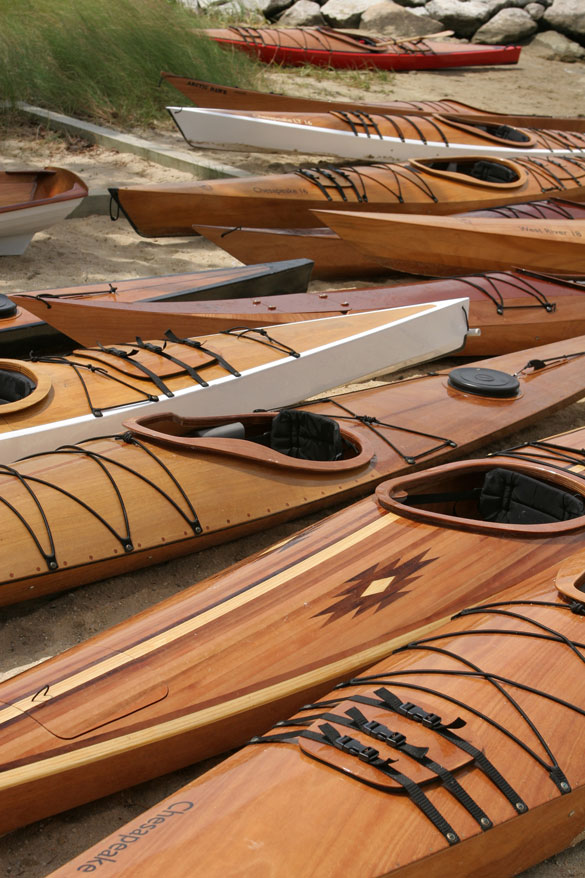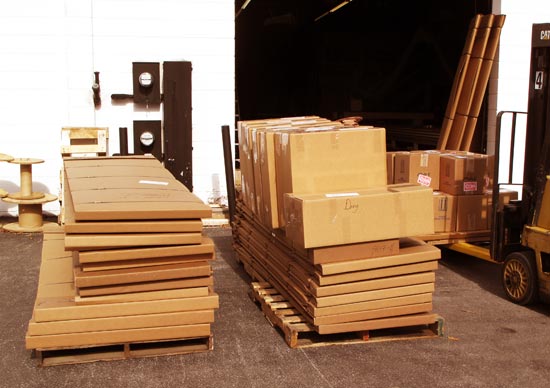
Chesapeake Light Craft hit a huge milestone on November 15th, 2010, when we shipped our 20,000th kit.
The 20,000th kit was a Shearwater 17, shipped to a builder in Aguanga, California.
While most CLC boat kits are built in the United States, kits have been shipped to 63 countries, from Trinidad to Turkey, South Korea to the Kyrgyz Republic.
It’s impossible to know how many of the kits are on the water. CLC, of course, isn’t just a kit company: we were selling plans in 1991, and still sell hundreds of sets of plans every year. We know lots of plan sets turn into finished boats---we get the photos almost daily---so the actual flotilla of launched boats is well above 20,000 in more than 70 countries.
Some fun trivia:
· If all those boats were lined up bow to stern, they would stretch 56.8 miles, or 91.4 kilometers. Essentially into outer space if stood up (for end pours).
· You could line up three parallel rows of CLC boats (almost) across the English Channel, plank it over, and walk across.
· If the fleet paddled, rowed, and sailed past you at 3 knots in a line with a few feet between each boat, you’d stand there for almost 22 hours.
· We’ve used about a thousand carbide router bits since we got a CNC machine for cutting kits in 1997.
· Since 2000, we’ve shipped 550 boat kits to schools of all description. A lot of high school shop classes and senior projects in there.
· Unbound and spread out on the ground, the paper plans and manuals that accompany 20,000 kits would cover about 12 acres.
John Harris reminisces about kit building:
“An Annapolis boatbuilder named Chaim Russ built the first kits for Chesapeake Light Craft in 1993. For various reasons he’d had enough after 30 or 40 kits, so the job of kit manufacturing was passed on to the small Chestertown, MD boatshop where I was working, in 1994. Chaim brought over a Volvo wagon full of patterns for parts, and off I went. I built a 5x8 table with a router mounted in the middle. A flush-trim bit on the router followed the patterns, which were tacked down to plywood blanks, and the finished parts carried to a hand-built scarfing machine. At first we built wooden crates for every kit, but they failed easily and we switched to custom made cardboard cartons.
“Chris brought the manufacturing under one roof in 1995, in Annapolis. The router table persisted until the summer of 1997, at which point there was so much demand for kits that as many as three tables were running all day to keep up. Between that and a colleague named Julian running his finger into the router bit, we knew it was time to step up to a CNC machine. The first machine was made by MultiCam and arrived in the fall of 1997. The technicians were never able to make it run! We sent it back, evidently a first for that company. AXYZ Automation got us one shortly thereafter, and they’ve built the last four machines for us. Three out of four of those we were able to cause to work…there was loads of unhappiness along the way. CNC machines are wondrous to watch and perform feats of productivity when they work, but the care and feeding is a costly nightmare, most especially on the software side.
 |
|
| Kits ready to go on the truck |
“Packaging and shipping has never been easy. It’s essentially impossible to design packaging that will withstand anything the thugs who work at shipping depots can do to a box. We found out quickly that heavier packaging invites additional abuse and thus MORE damage, not less. We’ve always stuck with air freight, even though it’s costly. It’s faster, so the boxes slip through the mailstream more quickly and the thugs have less time to devise ways to break the boxes. Making the boat parts smaller---think multichine kayaks---so that the packaging can be smaller is one strategy to save money, but I don’t believe in designing boats to fit the packaging. We design the boats so that they look good, and then figure out how to package them.
“I see us shipping more strip-planked kits. The strip-planked designs keep getting better and better, and it doesn’t hurt that the shipping is easier. And as gas prices go up, so will the cost of shipping. In any case, I bet the 40,000th kit is a kayak, too. Chris Craft claims they shipped 58,000 kits back in the 1950’s. So we have some work to do.”
–John C. Harris

 return to section:
return to section: 










